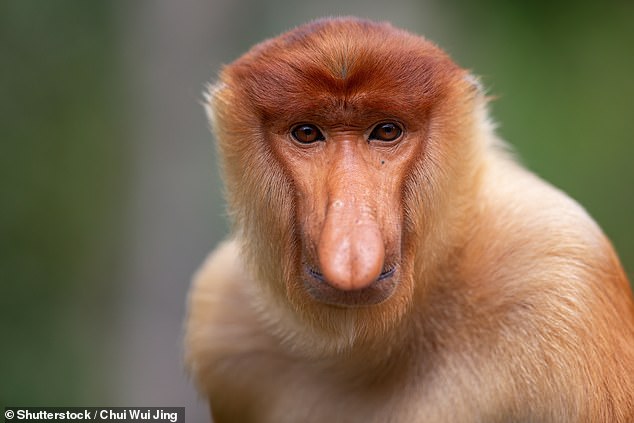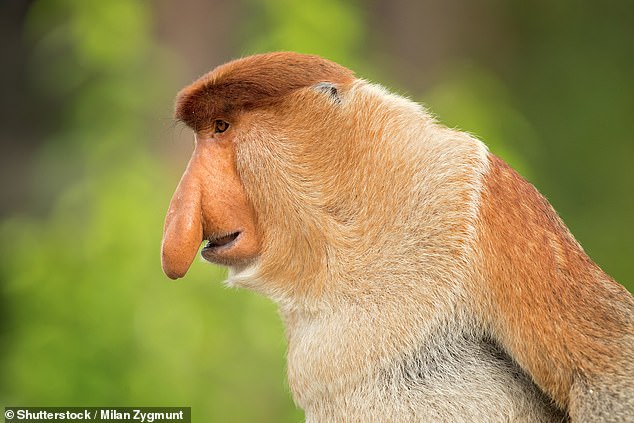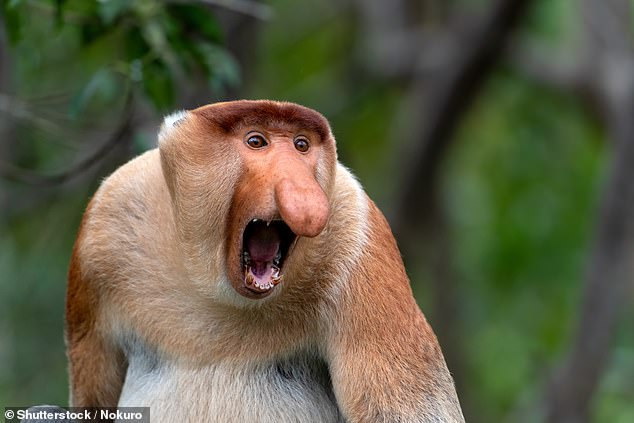- Male proboscis monkeys have large noses, earning them the title of “ugliest animals”
- They offer important benefits, especially when it comes to attracting a woman.
It’s safe to say that proboscis monkeys are some of the strangest looking creatures in the animal kingdom.
While females have pointed noses, males have large, rather phallic noses, earning them the title of “the ugliest animals in the world.”
Now, a study has finally gotten to the bottom of this unusual facial feature.
Scientists at the Australian National University say their big noses are more than just an eye sore.
Instead, they offer several important benefits, especially when it comes to attracting a female partner.
It’s safe to say that proboscis monkeys are some of the strangest looking creatures in the animal kingdom. While females have pointed noses, males have large, rather phallic noses, earning them the title of “the ugliest animals in the world.”

Scientists at the Australian National University say their big noses are more than just an eye sore. Instead, they offer several important benefits, especially when it comes to attracting a female partner.
Proboscis monkeys are endemic to Borneo and have been called one of the ugliest animals in the world thanks to their unsightly noses.
In a new study, researchers set out to understand why this unusual feature evolved.
The team used 3D scans of monkey skulls to understand size and shape measurements of the internal structure of their nasal cavity.
The scans revealed how the shape of the nasal cavity evolved to allow males to make louder, deeper squawks and roars.
“We wanted to understand why the nose of male proboscis monkeys is so large and whether their nasal cavities have a distinctive shape,” said Dr Katharine Balolia, who led the study.
“We found that males have much larger nasal cavities than females and that their nasal cavities are also shaped differently than females.

Proboscis monkeys are endemic to Borneo and have been called one of the ugliest animals in the world thanks to their unsightly noses.
“Being able to make louder, deeper calls thanks to a larger and longer nasal cavity helps male monkeys assert their health and dominance.
“This helps male monkeys attract females and scare away other males.
“The more females a male can attract, the more it will allow him to father more offspring. Therefore, having a large nose and being able to emit nasal honks and roars more easily due to a uniquely shaped nasal cavity really helps men show their quality and status to potential female partners.’
Borneo is covered in a jungle-like environment, which could help explain why monkeys’ noses evolved to become so large, according to Dr. Balolia.
“Proboscis monkeys live in coastal mangroves and forested environments and often cannot see each other through the trees,” he said.
“That’s why loud, nasalized calls are important for communicating with each other, especially between males.”
“The fleshy tissue of the nose probably became larger over time, as its ability to make nasal squawks and roars improved. Proboscis monkeys rigidly straighten their noses when making these calls.
“It is possible that females began to find large noses visually attractive for mate selection, as it was an honest sign of health and dominance.”
The scans also revealed that the nasal cavity enlarges with age, which explains why older men have larger noses.
“This coincides with the time when they achieve dominance status among other male monkeys, allowing them to scare away other males and attract many females who are ready to reproduce,” Dr Balolia added.


